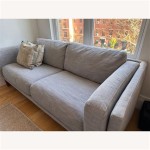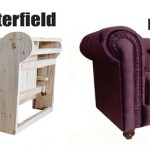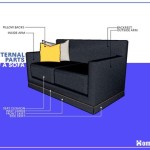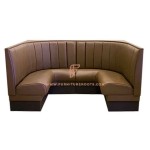Wood Sofa Furniture Plans: A Guide to Free Resources and DIY Construction
The allure of a custom-built wood sofa stems from a desire for personalized aesthetics, durable construction, and the satisfaction of crafting furniture. While professional woodworking can be costly, numerous online resources offer free wood sofa furniture plans, enabling individuals with varying skill levels to embark on this rewarding DIY project. This article explores the availability, considerations, and potential challenges associated with utilizing free wood sofa furniture plans, providing a comprehensive guide for aspiring furniture makers.
Before delving into specific plans, it is crucial to assess one's woodworking skills and available tools. A complex sofa design will require more advanced techniques and specialized equipment compared to a simpler, more minimalist structure. Evaluating these factors will ensure a successful and enjoyable building experience.
Sourcing Free Wood Sofa Furniture Plans
The internet provides a plethora of websites and online communities dedicated to woodworking, many of which offer free plans for furniture projects, including sofas. These plans range in complexity, style, and material requirements. Identifying appropriate plans requires careful searching and evaluation.
Websites dedicated to DIY projects, home improvement, and woodworking are primary sources for free plans. These sites often feature user-submitted projects with detailed instructions and accompanying diagrams. Search terms such as "free wood sofa plans," "DIY sofa plans," or "woodworking sofa plans" will yield a wide array of results. It is imperative to carefully vet the source of the plans. Look for reputable websites with established communities and positive user reviews.
Online woodworking forums and communities are another valuable resource. Members often share their own designs and modifications to existing plans, providing a collaborative environment for furniture building. Participating in these communities allows for asking questions, seeking guidance, and gaining insights from experienced woodworkers. These communities often have dedicated sections or archives where plans and project details are stored.
YouTube channels dedicated to woodworking also offer visual guides and step-by-step instructions for building furniture, including sofas. While some channels may not provide downloadable plans, the visual demonstrations can be invaluable for understanding construction techniques and visualizing the final product. These videos often include tips and tricks that can enhance the building process.
Libraries and public archives may house collections of woodworking books and magazines that contain sofa plans. While these resources may not be readily available online, they can offer a unique and alternative source of inspiration and design ideas. Checking local library catalogs or online archives can reveal hidden gems of woodworking knowledge.
When evaluating free plans, it is essential to consider the level of detail provided. Comprehensive plans should include detailed diagrams, precise measurements, a complete materials list, and step-by-step instructions. Incomplete or ambiguous plans can lead to errors and frustration during the building process.
Many free plans are offered in various formats, such as PDF documents, image files, or online tutorials. Choosing a format that is easily accessible and printable is crucial for convenient reference during the building process. PDF documents are often preferred due to their portability and ease of sharing.
It is important to be aware of the potential limitations of free plans. They may not always be professionally designed or rigorously tested, and they may contain errors or omissions. Therefore, it is crucial to carefully review and adapt the plans as needed to ensure structural integrity and desired aesthetics.
Essential Considerations Before Commencing the Project
Once a suitable plan has been identified, meticulous planning and preparation are essential for a successful sofa-building project. This involves selecting appropriate materials, acquiring necessary tools, and preparing the workspace.
The choice of wood is a critical factor in determining the sofa's durability, appearance, and cost. Hardwoods such as oak, maple, and walnut are known for their strength and beauty, but they are also more expensive than softwoods such as pine and fir. Softwoods are suitable for less demanding applications or for interior components that are not subjected to heavy wear and tear. Pressure-treated lumber may be required for outdoor sofas to resist moisture and decay.
Calculating the required quantity of lumber is crucial to avoid shortages or excessive waste. The materials list in the plans provides a starting point, but it is always advisable to add a safety margin to account for errors and unforeseen circumstances. Consider the dimensions and cuts required for each component of the sofa, including the frame, legs, armrests, and backrest.
A well-equipped workshop is essential for efficient and accurate woodworking. Essential tools include a table saw, miter saw, circular saw, jigsaw, drill, sander, and various hand tools. The specific tools required will depend on the complexity of the sofa design and the techniques used. Safety equipment, such as safety glasses, ear protection, and dust masks, is also crucial for protecting oneself from potential hazards.
Preparing the workspace involves clearing clutter, setting up adequate lighting, and ensuring proper ventilation. A clean and organized workspace promotes efficiency and reduces the risk of accidents. Adequate lighting is essential for accurate cutting and assembly, while proper ventilation is necessary to remove dust and fumes generated during the woodworking process.
Acquiring necessary fasteners, such as screws, nails, and bolts, is also an important part of the preparation process. The type and size of fasteners will depend on the specific joints and connections used in the sofa design. High-quality fasteners will ensure the structural integrity of the sofa and prevent loosening over time.
Upholstery materials, such as fabric, foam, and batting, will be required for the cushions and padding of the sofa. The choice of upholstery materials will impact the sofa's comfort, appearance, and durability. Consider the desired style, level of comfort, and resistance to wear and tear when selecting upholstery materials.
Finishing materials, such as stain, paint, and varnish, will be needed to protect the wood and enhance its appearance. The choice of finishing materials will depend on the desired aesthetic and the type of wood used. Consider the durability, ease of application, and environmental impact of the finishing materials.
Potential Challenges and Mitigation Strategies
Building a wood sofa can present various challenges, particularly for novice woodworkers. Anticipating these challenges and developing mitigation strategies can help ensure a successful project outcome.
Inaccurate measurements and cuts are a common challenge in woodworking. Even small errors can accumulate and lead to misaligned joints and structural instability. To mitigate this risk, it is essential to double-check all measurements before cutting and to use precision measuring tools. Practicing cutting techniques on scrap wood can also help improve accuracy.
Joints are critical for the structural integrity of the sofa. Weak or poorly executed joints can lead to loosening, sagging, and eventual failure. To ensure strong joints, it is essential to use appropriate joinery techniques, such as mortise-and-tenon joints, dovetail joints, or pocket-hole joints. Proper gluing and clamping are also crucial for creating durable joints.
Sanding and finishing can be time-consuming and challenging, but they are essential for achieving a smooth and professional-looking finish. Uneven sanding can result in visible scratches and imperfections, while improper finishing can lead to blotching and discoloration. To mitigate these risks, it is essential to use progressively finer grits of sandpaper and to apply multiple thin coats of finish. Practicing sanding and finishing techniques on scrap wood can also help improve results.
Upholstery can be a complex and specialized skill. Incorrectly installed upholstery can result in wrinkles, sagging, and discomfort. To mitigate these risks, it is advisable to seek guidance from experienced upholsterers or to consult online tutorials and resources. Consider using pre-made cushions and covers to simplify the upholstery process.
Ensuring the sofa's structural stability is paramount for safety and longevity. A poorly designed or constructed sofa can collapse under weight or become unstable over time. To mitigate this risk, it is essential to carefully review the plans and to reinforce critical joints and connections. Consider adding additional supports or bracing to enhance the sofa's structural integrity.
Maintaining a safe working environment is crucial to preventing accidents and injuries. Woodworking tools can be dangerous if not used properly. To mitigate these risks, it is essential to wear appropriate safety gear, to follow manufacturer's instructions, and to exercise caution at all times. Keep the workspace clean and organized to prevent tripping hazards.
Adapting free plans to personal preferences and available resources can be challenging. Many free plans are designed for specific materials or dimensions, which may not be readily available or suitable for individual needs. To mitigate this challenge, it is essential to carefully evaluate the plans and to make necessary modifications to accommodate available resources and desired aesthetics. Consider consulting with experienced woodworkers or designers for guidance.
Ultimately, building a wood sofa using free plans requires careful planning, meticulous execution, and a willingness to learn and adapt. By understanding the potential challenges and implementing appropriate mitigation strategies, individuals can successfully create a beautiful and functional piece of furniture that reflects their personal style and skills.

Free Diy Furniture Plans To Build A Crate Barrel Inspired Reef Sofa The Design Confidential

Free Diy Furniture Plans How To Build An Aegean Outdoor Sofa The Design Confidential

Rogue Engineer Free Plans Outdoor Wood Plank Loveseat

Free Diy Furniture Plans How To Build An Outdoor Reef Sofa With Modifications For Cushions From Target The Design Confidential

Diy Sofa Made Out Of 2x4 S Free Plans Modern Builds

Free Diy Furniture Plans To Build An Indoor Outdoor Belvedere Large Sofa The Design Confidential

Diy Outdoor Sofa

Diy Sofa Made Out Of 2x4 S Free Plans Modern Builds

Diy Outdoor Seating Her Tool Belt

Diy Outdoor Sofa A Erfly House








